Want To Dramatically Improve Your Tasting Skills? Do This One Exercise
Plus: New releases from The Eyrie Vineyards, X Novo and Walter Scott
During the decade preceding Covid I had the opportunity to be a guest speaker on a number of cruises. My responsibilities could include staff training, hosting wine-centric dinners and participating in guided shore tours to wineries. The main event on any cruise would be a seminar held in the dining room or demonstration kitchen. My topic was ‘How To Be A Better Wine Taster’. During the course of an hour or so I guided attendees through a wine tasting focused on specific techniques for palate development. These seminars were well-attended and productive, and over time I was able to fine tune the material to get the most out of the time allotted.
But in retrospect I missed one very important tactic, maybe the most important tip I could have given.
This thought occurred to me following a brief visit from my brother-in-law last month. He and I have enjoyed a few bottles of wine socially over the years, but during his recent visit we had more private, quality time to taste and chat about wine, and I set up some interesting comparisons to spark the conversations. He flew home with a six-pack of wines (thank you Alaska for your free shipping) that I chose to both challenge and (hopefully) delight him. Knowing from past experience that his preferences run to big, robust, super-ripe red wines I ‘spiked’ the six-pack with bottles of that nature. As I often do when giving wines to friends, I asked him to send me his thoughts on any that he particularly liked or had a strong opinion about.
To my delight he went well beyond like/don’t like and has sent detailed notes on every wine he’s tasted. His notes are not only focused and thorough, but more entertaining than a lot of the tasting notes that get published in the major wine publications and newsletters. Here are a few examples, edited only for length.
Commenting on a near 16% abv Red Mountain Syrah: “I took one sip and was like, ‘Whoa, this means business.' It’s super dark red in color and rich, almost like drinking blackberry jam mixed with a little smoke and maybe some dark chocolate? It made me think of sitting by a fire with a plate of good meat and cheese. The smell was awesome too – fruity but also kind of earthy. Overall description: a super tasty, a little intense, strong, and a kind of badass wine.”
A Ribbon Ridge Pinot Noir: “Right out of the bottle, the aroma is like walking through a blackberry patch after the rain – super fresh, slightly earthy, and a little bit spicy. The wine’s color is kind of light and ruby, like most Pinots, but it’s got some serious flavor. It seemed to have little tart cherry and cranberry taste going on at times. Overall, if you're into bright, elegant Pinots with a little attitude, this one tastes like someone really cared when they made it.”
I really enjoyed his notes on a Walla Walla Tempranillo: “Right off the bat the smell was deep with dark cherries, very smoky, and earthy. My first sip had a strong bite, like it wanted to start a fight but also wanted to buy me dinner afterward. It's bold and overwhelming; I got a rich, fruity core of blackberries and plums with lots of spice and something savory, like scorched meat or tobacco. I can respect the complexity of this wine, however for me a little too much going on with this one… not in my wheelhouse.”
What struck me about these descriptions, from a guy who to my knowledge had never written a tasting note in his life, was how much he packed into a few sentences that showed a lot of attention had been given to each sip of each wine. Palate improvement will inevitably follow when you slow down, bear down and focus intently on the wine in your glass. Forcing yourself to write down your thoughts further sharpens your concentration and lengthens your attention span. You don’t have to be a natural writer - you’re not aiming for publication. This writing exercise is entirely for your benefit. It will help you get more out of every bottle, and whether or not you become a better writer, this practice will absolutely make you a better taster. And isn’t that the goal of anyone who enjoys a good bottle of wine?
How I Organize My Own Tastings: Since leaving Wine Enthusiast and ending all other freelance work I’d been doing for print and digital media, I have rebuilt my tasting practices from the ground up. I will continue to taste wines with winemakers when I am visiting wineries, to share philosophies and discuss tasting practices. But tastings for all published reviews and scores will take place only at home under tightly controlled conditions. I open no more than a half dozen wines at a time and retaste them repeatedly over 24 – 48 hours. I use specific stemware and eliminate all distractions such as cooking smells, food, music and all media.
My focus is exclusively on the wines. These are almost always newly-released wines. I believe it’s far more important to know their context and history than to put a brown paper bag over them so I won’t lose my ‘objectivity.’ I’m opinionated. You can agree or disagree, but you’ll always know what I think. Put my notes in a pile labeled ‘Wines Tasted With Context’ and put the rest in a pile labeled ‘Wines Tasted In A Brown Paper Bag’. I leave it to you to choose the ones you find more meaningful.
The Eyrie Vineyards
I’ve been fortunate to have tasted and reviewed wines from Eyrie on dozens of occasions going back 35 years. When he was alive I sometimes tasted with David Lett (aka Papa Pinot); more recently I’ve toured the vineyards and tasted wines with Jason Lett, at the winery, at special events and occasionally at my home. Some things about Eyrie wines have always been true, remain so today.
These can be very challenging wines when first released. In many ways they are deceptive – the sunset hue makes them look older than they are; their lightness more resembles a village Burgundy than most of their darker, fruitier Dundee Hills peers. Sometimes they are reductive, shut down. But more often they immediately display complex, wreathlike aromas and trailing, detailed, textural finishes. The mid-palate is where they need time – sometimes decades – to fully express themselves. No winery in Oregon has a better track record for making ageworthy Pinot Noir; and very few others have access to grapes from half-century-old vines.
In recent years Eyrie’s vineyards have fallen victim to the ravages of age, but some of the original vines remain. The storied South Block Pinot Noir is still made – I awarded the 2017 a perfect score – and 2019, the current release, is almost its equal. I asked the winery if there will be any more South Block releases. Good news from Sales Manager Russ Margach:
“The vines in South Block are slowly succumbing to phylloxera, but are still producing” he writes. “If I had to guess I would say there might be another 10 years of production. Once that’s over though, Jason’s replanting strategy or process is to cut the vines off at the ground level and then allow the roots to naturally deteriorate over about seven years before replanting. Ultimately that would be about a 10 year gap in that wine’s production, from when it’s first taken down to the ground, then the ground allowed to remain fallow for the traditional seven years, and then three years before new fruit on new vines would appear.”
Each of the Eyrie wines profiled below is a standalone success, but viewed as a portfolio they are magnificent, unique and irreplaceable. Note that wines labeled ‘The Eyrie’ are reserve level selections. This year marks the 60th anniversary of the first vines going into the ground at The Eyrie Vineyards. A tremendous milestone, and one that deserves our highest respect.
The Eyrie Vineyards 2023 Oregon Pinot Blanc – Very limited with hand-written script label. All estate-grown, rich gold color, with amazing aromatics, palate density and depth of flavor. Bee pollen, lemon oil, nut butter, baked apples and a suggestion of pie crust – quite a unique take on the grape. As inviting as this is from the first sniff, it’s the penetration and length that send your taste buds into the stratosphere. Not a hint of residual sugar that I can taste, and yet it is nicely rounded off and rich all the way to the end. 616 cases; 13%; $36 (Dundee Hills) 94/100
The Eyrie Vineyards 2023 Pinot Gris – This estate bottling is fully dry, laced with minerality and a touch of petrichor. Aromatically complex with honeysuckle and pollen highlights. These Eyrie white wines, perhaps suggesting a long life ahead, seem to sneak up on you as they trail out. The finish expands and lingers, adding volume and texture along the way with a trace of almond cookie. It's always worth noting that Eyrie planted the first Pinot Gris in the country, and with five decades of experience they still seem ahead of the curve on what to do with the grape. Very Euro in style and elegance, very Oregon in power and drive. 1952 cases; 13.3%; $30 (Dundee Hills) 95/100
The Eyrie Vineyards 2023 The Eyrie Pinot Gris – Pinot Gris from Eyrie, as proven by a 40-year-old bottle tasted at the winery a couple of years ago, can age as well as the finest Burgundy. The few cases labeled ‘The Eyrie” with handwritten script are from the remaining original vines planted more than a half century ago. The textured, refreshing minerality that is a hallmark of Eyrie’s white wines is in full flower here, and yes, flower pollen is part of the flavor parade. The rich gold hue suggests some intentional oxidation and aging in a percentage of new oak. Apple and Asian pear fruit is dappled with spicy cinnamon. Very few wineries in the Pacific Northwest provide the opportunity to literally drink from the history of the region, and this is one. 109 cases; 13.5%; $60 (Dundee Hills) 95/100
The Eyrie Vineyards 2023 Chardonnay – I’ve been a lifelong admirer of Eyrie wines, and despite their irreplaceable contribution to the development of the Oregon wine industry the road has not been without more than a few potholes. But history has proven David Lett a savant, and Jason Lett a savior, and the wines today not only are absolutely in perfect harmony with the taste and style preferences of the 21st century, they provide a template for the future. No irrigation, no tillage, no herbicides, native yeasts and light handling allows the wines to speak unencumbered. Sounds easy, but it’s not. This is aromatic, inviting and complex, a balance of fresh herbs, clean minerals, apple skin and flesh with touches of petrichor and a salty finish. 524 cases; 13%; $50 (Dundee Hills) 94/100
The Eyrie Vineyards 2022 The Eyrie Chardonnay – Sourced from the oldest vines which are now losing vigor, the flavors are detailed, pointillistic and compact, unpacking gracefully while breathing in the glass. I wouldn’t beat up this wine with aggressive aeration; best to open it, pour it in a big round stem, and let the glass do the work. Bee pollen, marmalade, a hint of maple syrup, baked apple, cinnamon dusted pie crust and more and more unfold with time and attention. 135 cases; 13%; $90 (Dundee Hills) 96/100
The Eyrie Vineyards 2022 Estate Pinot Noir – The estate bottling blends grapes from five separate estate vineyards. It’s reductive and needs extra breathing time to burn off some of the struck match character and open up the flavors. Brambly blackberries, black cherry, cola and black tea highlight the immediate impressions. A dark, dense, powerful wine that should open up over time. 1846 cases; 13.5%; $60 (Dundee Hills) 93-94?/100
The Eyrie Vineyards 2022 The Eyrie Pinot Noir – I love the delicacy, elegance and aromatics, that it’s full on the palate without being heavy, and wonderfully expressive right out of the chute. This is Pinot Noir showcasing the most elusive charms of this sometimes ephemeral grape. Rosewater, strawberries, mountain raspberries, blood orange and, well, lots more is going on here. Some Eyrie wines need time, some need aeration. This one just needs your full attention. The tea leaf tannins and long, gliding finish promise decades of life ahead. 293 cases; 13%; $90 (Dundee Hills) 96/100
The Eyrie Vineyards 2019 South Block Reserve Pinot Noir – The history of Eyrie’s South Block is written up on the back label, and for good reason – it is unique in Oregon and honestly in America. First planted in 1968 and bottled as a single block selection in 1975, these 10 rows of Pinot Noir are as special and iconic as any in Oregon. I awarded the 2017, the last vintage I tasted, which was a much lighter wine… 100 points. The supremely elegant and subtle 2019 pulls together well-integrated components of strawberry, raspberry, chamomile tea, hints of Asian spices and on it goes. The palate’s finesse is beyond compare. Best guess from the winery is maybe another 10 vintages remain for these original South Block wines. The case count diminishes with every release as phylloxera takes its toll on these old soldiers. Were this my vineyard, when it’s all done, I’d have the vines bronzed as a testament to 60 years of brilliance. 54 cases; 13.8%; $300 (Dundee Hills) 98/100
The Eyrie Vineyards 2022 Sisters Pinot Noir – Jason Lett has divvied up his vineyards by age and elevation, this being the lowest site, planted four decades ago. It’s aromatic with a burst of pie cherry fruit and a whiff of tanned leather. The tannins are firm and lightly grainy, giving texture through the finish. Some nice details build as the wine opens, with touches of breakfast tea, lead pencil and lemon pepper. This is a sturdy, well-balanced, rather forceful selection. 507 cases; 13.5%; $65 (Dundee Hills) 92/100
The Eyrie Vineyards 2022 Outcrop Pinot Noir – Note the color on all of these wines – textbook Pinot, with a sunset hue that suggests it’s a wine much older than the actual vintage. This site was planted over the past 20 to 40 years on thin, rocky, volcanic soils overlooking the original Eyrie vineyard. It’s compact and aromatic, with balanced flavors of raspberries, red currant and blood orange, accented with coffee grounds and red licorice. Feels fairly high in acid more than tannin, with finishing flavors of citrus. Better tasting, more open and full after 24 hours. 269 cases; 13%; $75 (Dundee Hills) 93/100
The Eyrie Vineyards 2022 Roland Green Pinot Noir – This pours a bit darker in the glass than the other single vineyard selections, bringing marionberry and black raspberry fruits, rich earthy flavors, a dusting of coffee grounds and well-textured tannins. As with all the single vineyard selections from Eyrie, this strikes a unique note that defines its particular place in the overall vineyard. It’s a wine that wants extra aeration, and as is true of all Eyrie wines, the ageability is off the charts. 242 cases; 13.5%; $75 (Dundee Hills) 94/100
The Eyrie Vineyards 2022 Daphne Pinot Noir – Daphne is the highest site among the winery’s vineyards, topping out at 890 feet. It’s principally planted to Pinot Gris, but a bit of Pinot Noir was put in 50 years ago, and those vines are sourced for this selection. This begins as an austere, reserved wine, compact with suppressed power. Dried herbs, wild strawberries, pomegranate and a hint of mushroom build a compound palate, which expands beautifully on the second day. The tannins and acids play nicely against each other. A three decade lifespan is not out of the question for this wine. 178 cases; 13%; $110 (Dundee Hills) 94/100
Last week’s post focused on Chardonnay, with particular shout-outs to the wines from Walter Scott and X Novo. This week I’ll bookend those notes with thoughts on their Pinots. Walter Scott’s focus on single vineyard expressions of both varieties is interesting for many reasons, but one that particularly intrigues me is the comparison of the two different grapes coming from the same AVA, vintage, vineyard and winemaker. For most of these single vineyard selections I have a clear preference, and it’s usually the Chardonnay that gets the higher score. But a couple of these vineyards do equally well with both white and red. Over time the traits that promote that sort of varietal equality are sure to be better understood.
Walter Scott 2023 Koosah Vineyard Pinot Noir – Planted in 2016, grapes from this young vineyard fall on the herbal side of Pinot Noir, with light fruit flavors of rhubarb and white strawberries. The acids are proportionate, and there’s an interesting array of fresh herbs streamlining the finish. 175 cases; 13.5%; $80 (Eola-Amity Hills) 90/100
Walter Scott 2023 Temperance Hill Vineyard Pinot Noir – This 35 year old vineyard has provided grapes to countless wineries over the decades. Though I’ve never found it to be uniquely distinctive, it’s fruit is highly reliable and much valued. This light, elegant wine showcases strawberry and raspberry flavors threaded with dried herbs and straw. Roughly 30% was aged in new oak, putting a lightly frame of toasted rice cakes around the finish. 100 cases, 13.5%; $80 (Eola-Amity Hills) 91/100
Walter Scott 2023 Sojeau Vineyard Pinot Noir – Warm, lightly spicy flavors of raspberry jam, mocha and sassafras, this broad and appealing wine is a great party starter. More wide than deep, open and flavorful, it’s accented with finishing notes of orange peel and chocolate. 425 cases; 13.5%; $80 (Eola-Amity Hills) 92/100
Walter Scott 2023 Cuvée Ruth Pinot Noir – Five vineyards contribute to this blend, a fine introduction to the winery’s exceptional lineup of 2023 Pinots. It’s well balanced with tart raspberry, marionberry and black cherry fruit, a foundation of clean earth and highlights from aging in 40% new oak barrels. This is immediately enjoyable, fresh and sappy, with a medium finish. 650 cases; 13.5%; $50 (Eola-Amity Hills) 92/100
Walter Scott 2023 Sequitur Vineyard Pinot Noir – Mike Etzel (Beaux Frères) planted this vineyard in 2012 - 2014, so it’s just now hitting its stride. A small site in the Ribbon Ridge AVA, it’s destined for greatness. The classic seafloor minerality is there, underscoring flavors of wild blueberries and cherries. It’s aged in half new oak (two barrels out of four) that gives a toasty edge to the finish. Good as it is, the best is yet to come. 100 cases; 13.5%; $80 (Ribbon Ridge) 93/100
Walter Scott 2023 Freedom Hill Vineyard Pinot Noir – Blueberries and cherries are front and center, abundant and backed with sappy acidity. There’s an underlying sense of organic earth, hinting at a mix of dried leaves, compost and fungus. The lively, textured finish has a splash of cola bursting through. This young wine feels as if it’s not yet fully resolved; more time in bottle will certainly be a plus. That said, it continued to open and meld together over the 48 hours I tasted it. 300 cases; 13.5%; $80 (Mt. Pisgah) 94/100
Walter Scott 2023 Witness Tree Vineyard Pinot Noir – Ripe, rich and redolent with plum and cherry fruit, this instantly appealing selection punches through with an array of blackberry, black cherry and cassis flavors. Tannins are full and dense, framing the fruit with a veneer of graphite. The aging in 30% new oak barrels adds toasted nuts, coffee grounds and dark chocolate threading through the long, bold finish. As a marker of the vintage this suggests it’s a powerful, fruit-driven year. This wine is available for immediate enjoyment but has the structure and power to develop further over the next 10 - 15 years. 125 cases; 13.5%; $80 (Eola-Amity Hills) 94/100
Walter Scott 2023 X Novo Vineyard Pinot Noir – Vineyard owner Craig Williams has planted 18! clones of Pinot Noir in this 1.3 acre block, and as this vineyard begins to hit its maturity the resulting complexity is apparent. It’s woven into the aromatics, detailed across the palate, and lengthens the finish. This is a wine that can be approached like a 1000 piece jigsaw puzzle, one piece at a time, already assembled. The job is to take it apart, not put it together. Raspberries, black cherries, plums, cola, sassafras, mocha (40% of the barrels were new), wet rock, citrus rind and more come out as the flavors unpack with breathing. One can only imagine what this wine will taste like in 20 or 30 years. 175 cases; 13.5%; $80 (Eola-Amity Hills) 96/100
Walter Scott 2023 Justice Vineyard Pinot Noir – This is a Bethel Heights vineyard, whose grapes are shared only with neighboring Walter Scott. Planted in 2000, this vineyard beautifully expresses the power of the AVA, delivering a textured palate dense with layers of marionberries, cherries, bramble, clean earth, wet rock and barrel-driven accents of coffee grounds and toasted walnuts. It’s long and compact, packed with well-married flavors and wonderfully textural from first sip to the delicately trailing finish. A whiff of leather comes out after a day of breathing open. 150 cases; 13.5%; $80 (Eola-Amity Hills) 97/100
X Novo
X Novo 2021 X Omni Vineyard Pinot Noir – This is the first vintage and current release of X Novo’s estate-grown Pinot Noir. Bottle shocked? No nose to speak of. Blackberry/plum color, fruit and grip. Quite closed, slowly showing some graceful elegance in the glass. Plum dominates, with traces of minty blackberries and chocolate. 129 cases; 13.5%; $100 (Eola-Amity Hills) 92?/100
X Novo 2022 X Omni Vineyard Pinot Noir – The year younger wine, due for a fall ’25 release, is more open and accessible than the ’21 from the first pour onward. It’s satiny, light but penetrating, showing luscious strawberry and cherry fruit front and center. With ample aeration the flavors expand and cover the palate, with resonant accents of sandalwood and hazelnuts. It finishes long and smooth, rich and full-bodied all the way through. 195 cases; 13.7%; $100 (Eola-Amity Hills) 95/100



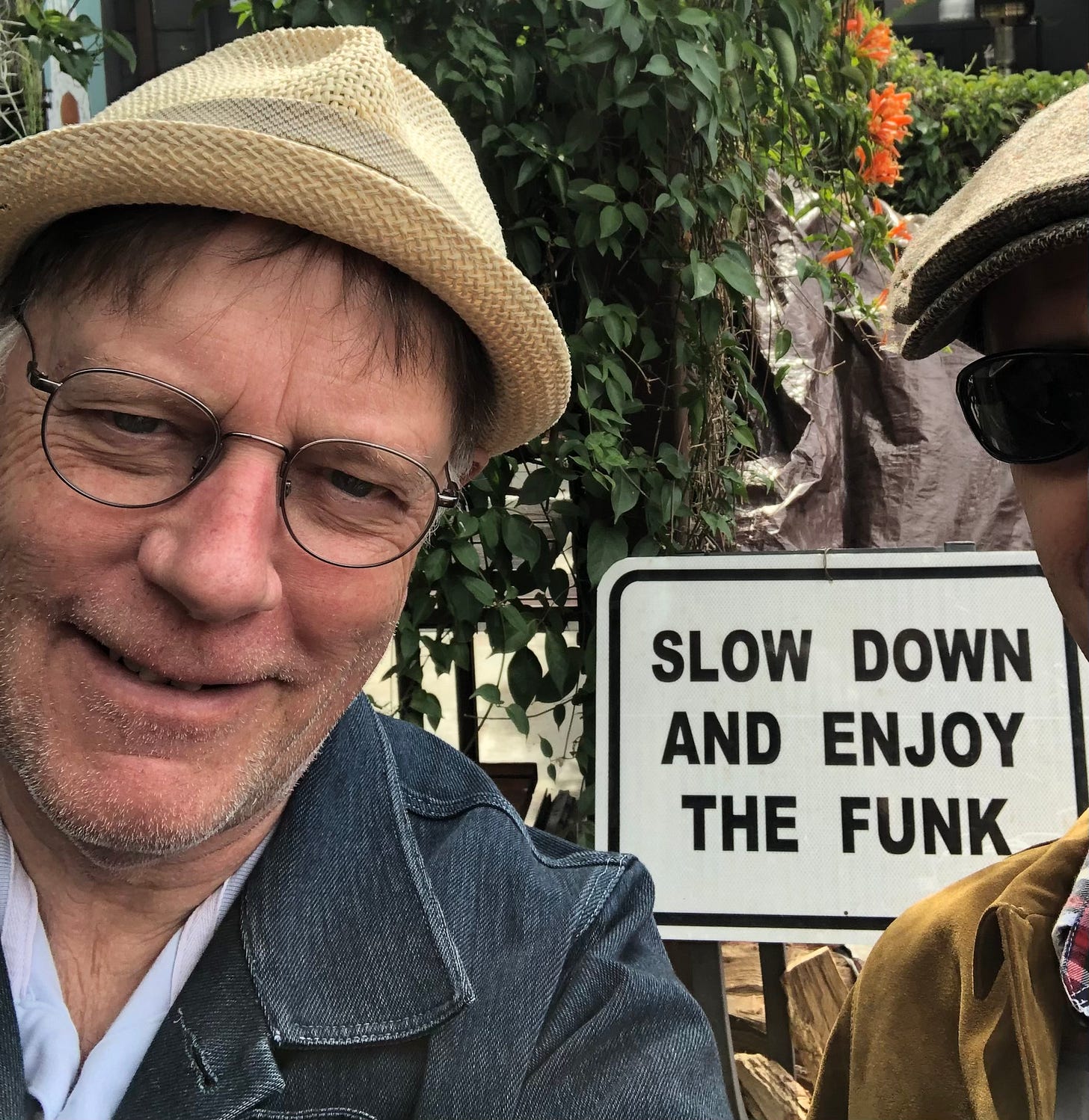
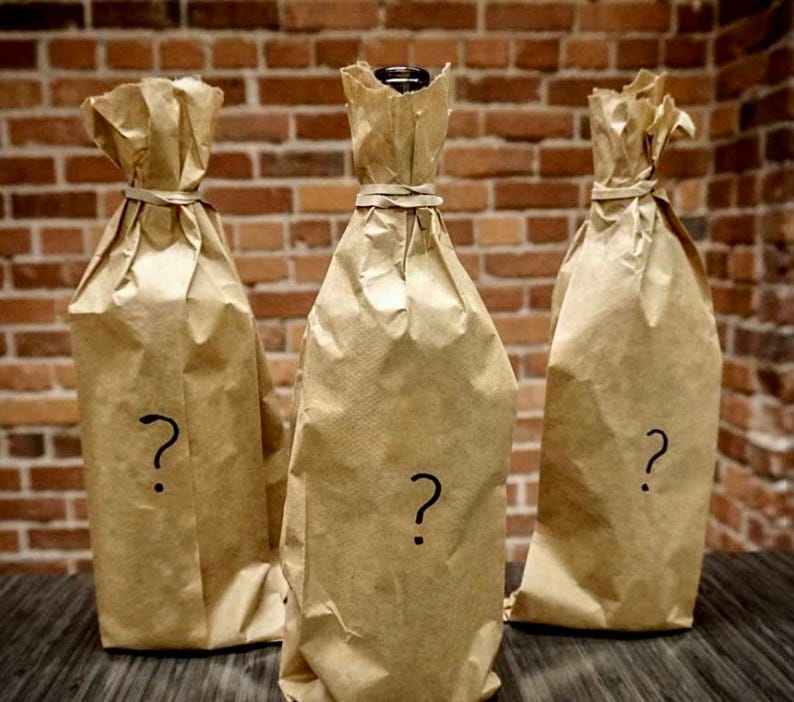
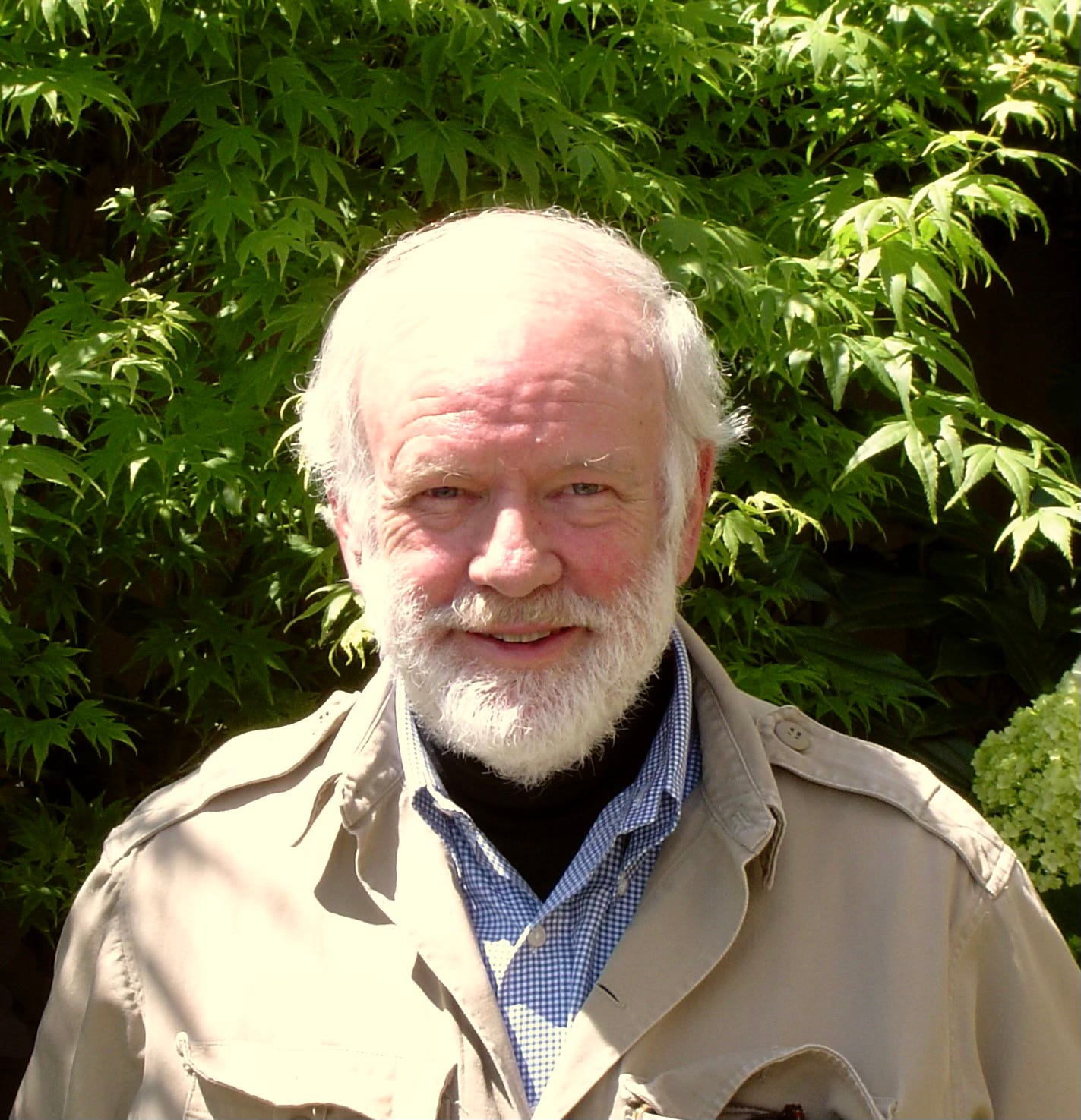
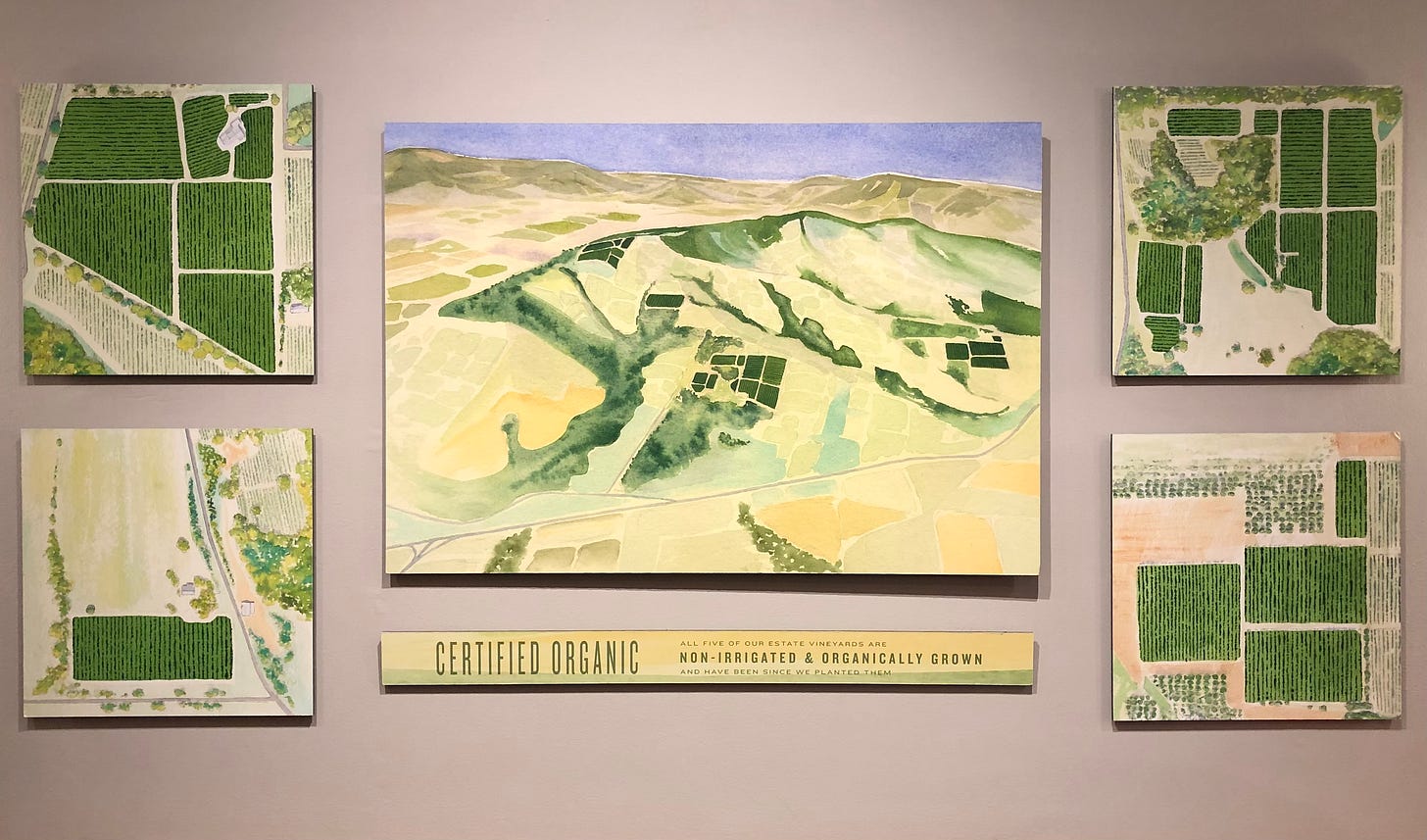
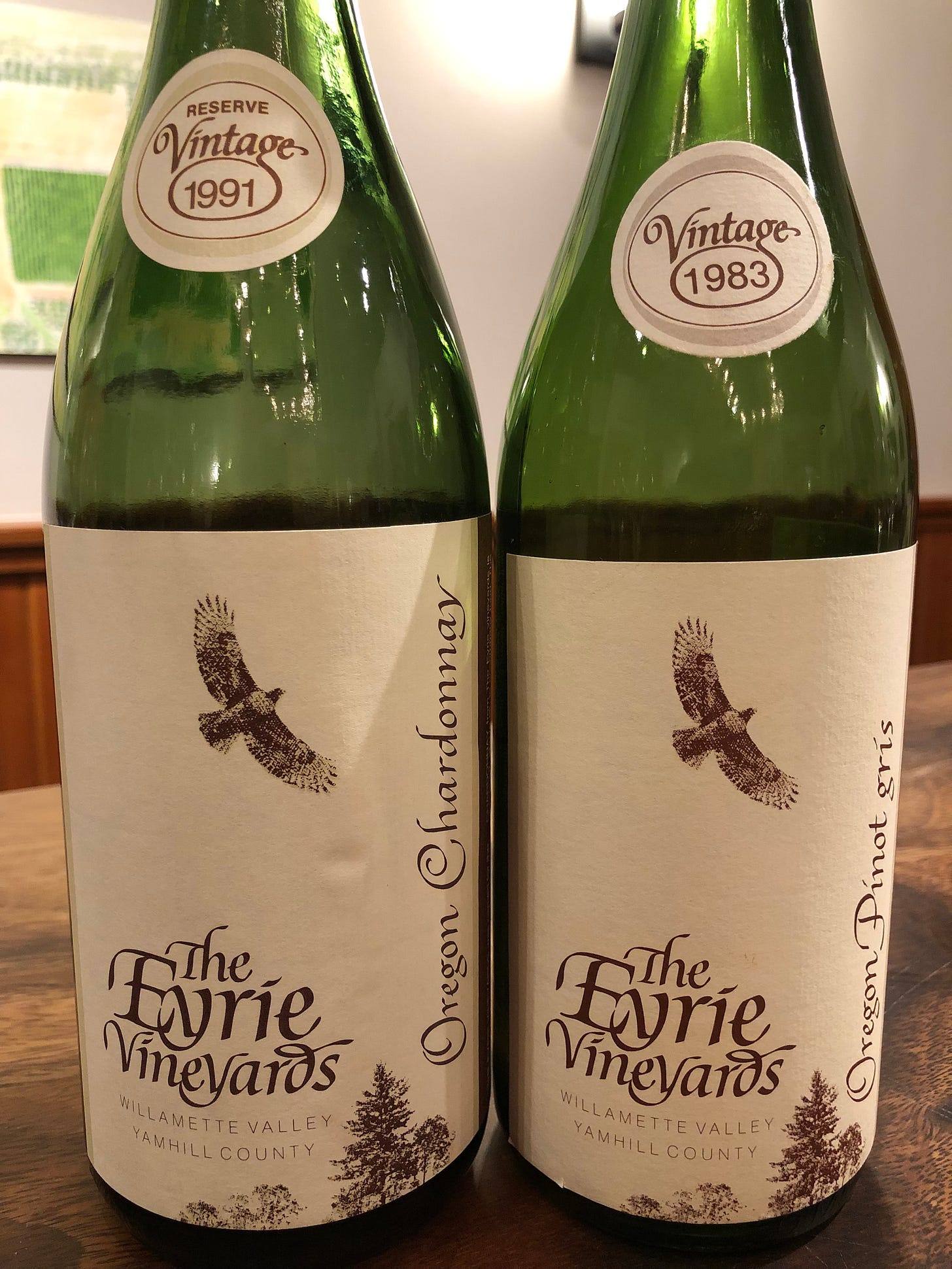
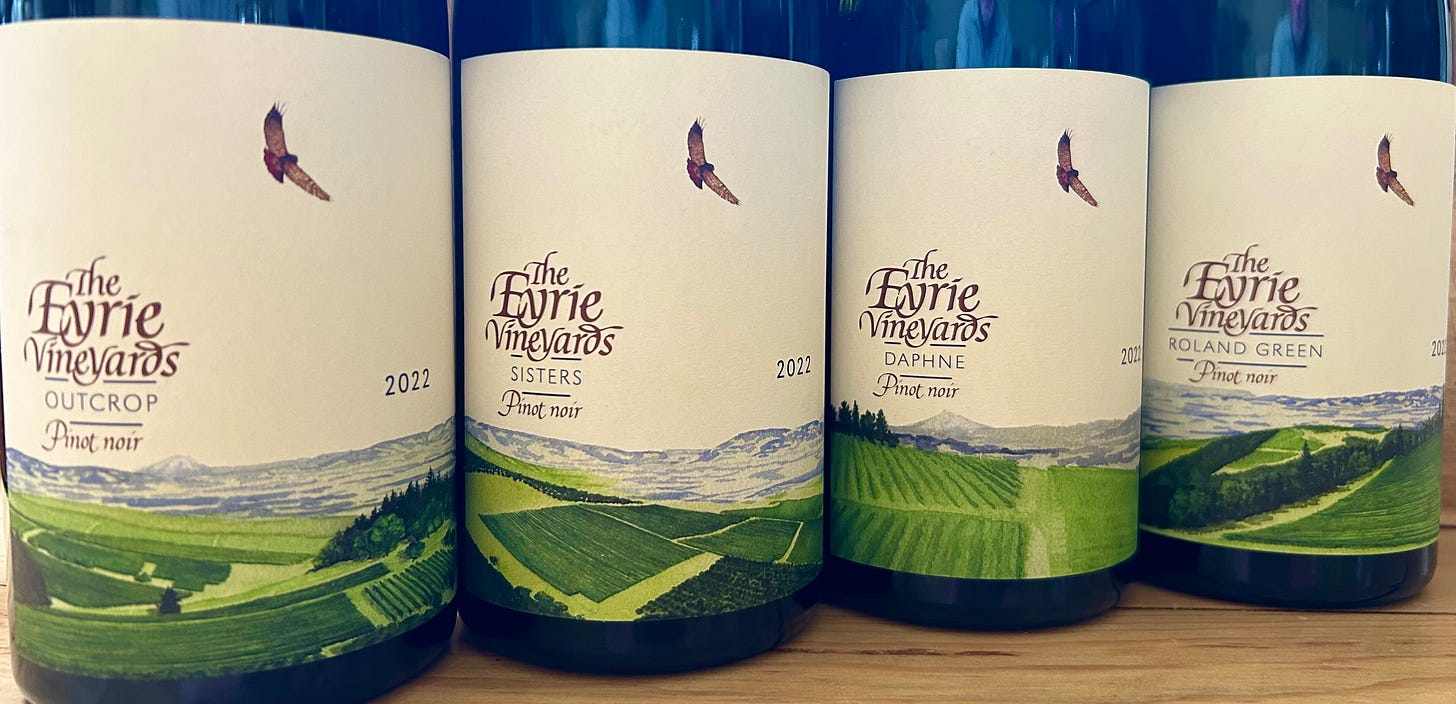
writing the notes is a good idea. I do it internally sometimes and I will try this next step.
More importantly can we have your brother-in-law be a guest reviewer a couple times per year?!? sounds like he'd be a hoot to share a glass or two with.
finally nice meeting you recently at capital call - keep up the good work!
Thanks for the insight on being a better taster and describer of wine. I appreciate all tips in improving in that department.